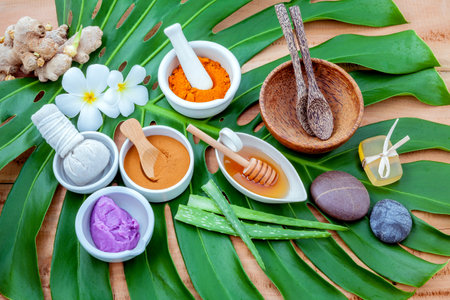Introduction to Indian Hair Care Traditions
In India, hair is far more than just a physical attribute—it is an integral part of identity, spirituality, and cultural heritage. Across the vast subcontinent, hair care rituals have been passed down through generations, deeply rooted in the traditions of each Indian state. From sacred ceremonies involving hair offerings at temples to the daily practices of oiling and masking, these customs are woven into the fabric of Indian life. The importance of maintaining healthy, lustrous hair is reflected not only in religious texts but also in classic literature, Bollywood cinema, and everyday conversations. For many Indian families, caring for one’s hair goes beyond aesthetics; it symbolizes respect for ancestry, self-care, and social status. This reverence for hair has given rise to a diverse array of natural treatments and homemade masks, with recipes reflecting regional climates, local ingredients, and indigenous wisdom. As we explore the traditional secrets from different Indian states in this series, you’ll discover how these ancient rituals continue to shape beauty standards and foster a sense of community across India today.
2. Ayurvedic Roots: Natural Ingredients & Timeless Wisdom
When it comes to traditional hair care in India, Ayurveda stands as the foundation—an ancient system of holistic healing that has been passed down through generations. Indian women and men have long relied on natural, locally sourced ingredients to craft hair masks and treatments that nurture, strengthen, and beautify their locks. Let’s delve into the core Ayurvedic ingredients and discover how each contributes to the vibrant hair culture across Indian states.
Key Ayurvedic Hair Care Ingredients
| Ingredient | Origin | Main Benefits |
|---|---|---|
| Amla (Indian Gooseberry) | Widespread across India | Rich in Vitamin C; strengthens roots, promotes hair growth, reduces premature greying |
| Shikakai | Central and Southern India | Natural cleanser; detangles hair, adds shine, prevents dandruff |
| Reetha (Soapnut) | Northern & Central India | Mild cleanser; maintains scalp health, adds volume, controls oiliness |
| Hibiscus | Southeast & Coastal regions | Nourishes scalp; stimulates hair growth, conditions hair, prevents split ends |
The Therapeutic Power of Nature
Each of these ingredients is not only celebrated for its cosmetic benefits but also for its therapeutic properties rooted in Ayurveda. For instance:
- Amla is often called the “divya aushadhi” (divine medicine) in Indian households for its rejuvenating effects on both scalp and strands.
- Shikakai pods are traditionally dried and ground into a powder to create gentle yet effective cleansers suitable even for sensitive scalps.
- Reetha’s saponins create natural lather, making it a popular choice for those avoiding chemical shampoos.
- Hibiscus flowers and leaves are crushed into pastes or infused in oils to deeply nourish and repair damaged hair.
How These Ingredients Are Used in Indian Homes
A typical hair mask might combine two or more of these elements, such as mixing amla powder with shikakai and reetha for a cleansing pack or blending hibiscus paste with coconut oil for an intensive overnight treatment. Families often pass down specific recipes tailored to local climates and personal hair needs—a testament to India’s rich tapestry of regional traditions within the broader framework of Ayurveda.

3. Regional Rituals: State-wise Hair Mask Secrets
India’s vast landscape is a treasure trove of hair care traditions, with each state drawing from its natural resources and cultural legacy. Let’s journey through some of the country’s most celebrated regions and uncover their signature hair mask rituals.
Kerala: Coconut & Curry Leaf Elixirs
In Kerala, renowned for its lush greenery and Ayurveda roots, hair masks are typically crafted from coconut oil, curry leaves, and hibiscus petals. Local women often warm coconut oil with fresh curry leaves, allowing the infusion to cool before massaging it into the scalp. This ritual is believed to strengthen roots, prevent premature greying, and leave hair soft and lustrous.
Rajasthan: Fenugreek & Amla Heritage
The arid climate of Rajasthan calls for deeply nourishing masks. Here, fenugreek (methi) seeds are soaked overnight, ground into a paste, and blended with amla (Indian gooseberry) powder and yogurt. Rajasthani brides rely on this mixture to rejuvenate dry strands, improve volume, and impart shine—an age-old remedy passed down through generations.
Bengal: Mustard Oil & Aloe Vera Blend
Bengal’s humid weather inspires light yet potent treatments. A typical Bengali mask combines cold-pressed mustard oil with fresh aloe vera gel. This blend is massaged in circular motions onto the scalp to stimulate blood flow and promote hair growth, reflecting Bengal’s deep connection to both agriculture and traditional home remedies.
Tamil Nadu: Hibiscus & Neem Power
Tamil Nadu’s hair rituals celebrate native botanicals like hibiscus flowers and neem leaves. Women here crush these ingredients with curd or rice water to create a cooling mask that soothes the scalp and controls dandruff. The result is thick, glossy hair admired across South India.
Embracing Diversity in Hair Care
From the coconut groves of Kerala to the deserts of Rajasthan, every Indian state offers unique hair mask secrets shaped by local flora and customs. Incorporating these time-honoured recipes into your routine not only nourishes your hair but also connects you with India’s rich tapestry of beauty traditions.
4. Cultural Significance of Hair Oiling and Weekly Hair Masks
Hair oiling and the application of hair masks are much more than beauty routines in Indian households—they are deep-rooted cultural practices that symbolize care, tradition, and well-being. The act of oiling hair is often a weekly family affair, where mothers, grandmothers, and daughters gather, sharing stories while massaging warm oil into each others hair. This ritual not only strengthens bonds but also preserves age-old wisdom passed through generations.
Connection to Festivals and Auspicious Occasions
In many Indian states, special hair care rituals coincide with festivals or important life events. For example, during festivals like Diwali or Pongal, women apply luxurious hair masks made from fresh ingredients such as hibiscus flowers, amla (Indian gooseberry), and coconut milk. These treatments are believed to purify, rejuvenate, and invite good fortune. Brides-to-be often undergo a “Shringar” ritual involving elaborate hair mask sessions before their wedding day, symbolizing prosperity and marital bliss.
Family Traditions and Intergenerational Wisdom
Hair oiling sessions on weekends are cherished traditions across India’s diverse regions. Each family may have its own signature blend of oils—such as coconut in Kerala or mustard in Punjab—enhanced with herbs like neem or fenugreek. These recipes are handed down from elders and adapted based on seasonal changes or specific hair needs.
Wellness Beliefs: Mind, Body & Spirit
| Aspect | Description |
|---|---|
| Physical Wellness | Nourishes scalp, reduces dandruff, promotes healthy growth |
| Mental Wellness | Calming head massage relieves stress and supports relaxation |
| Spiritual Significance | Considered a form of self-purification before prayers and rituals |
The combination of weekly hair masks and regular oiling is embraced as an act of holistic wellness—balancing body, mind, and spirit. In essence, these traditional practices go far beyond aesthetics; they are woven into the very fabric of Indian culture, shaping identity and celebrating heritage.
5. Modern Trends: Cultural Evolution in Hair Care
India’s relationship with hair care is evolving rapidly, especially among the younger generations and within urban communities. While age-old traditions like applying coconut oil or using homemade hair masks of hibiscus, amla, and henna remain cherished rituals, there is a growing appetite for innovation. Today’s youth often blend these time-honoured practices with cutting-edge products from Indian and global brands, creating a fusion of heritage and modernity that defines contemporary Indian hair care.
Urban Influence & Global Inspiration
In cities like Mumbai, Bengaluru, and Delhi, it is common to see millennials and Gen Z experimenting with salon treatments, imported serums, and organic shampoos while still respecting the ritual of ‘champi’ (oil massage) passed down by their mothers and grandmothers. Korean hair masks, argan oil elixirs, and sulfate-free cleansers are now household staples—yet many users will apply these after a weekly session of traditional hair steaming or a neem-infused rinse.
Balancing Tradition and Innovation
This unique blend is not just about convenience; it’s about preserving culture while embracing new possibilities. For instance, young professionals might use traditional Ayurvedic powders like shikakai but mix them into ready-made masks for ease. Popular Indian brands such as Forest Essentials and Kama Ayurveda have responded by launching products that combine ancient wisdom with modern formulations.
The Ritual Remains
Despite the influx of global trends, the essence of Indian rituals remains alive. Many families gather for weekend oiling sessions or share recipes for DIY hair packs featuring local ingredients like curry leaves or fenugreek seeds. Social media influencers further promote this hybrid approach by sharing reels on how to integrate both worlds seamlessly—proving that modern India honours its roots while confidently stepping forward.
6. Tips for Creating Your Own Indian-inspired Hair Masks at Home
Unlocking the Power of Desi Ingredients
Embracing traditional Indian hair care means celebrating the diversity and richness of local ingredients. From coconut oil in Kerala to hibiscus in Tamil Nadu, many treasures are right in your kitchen. Here’s how you can create nourishing hair masks with a truly Indian twist.
Step 1: Choose Your Base Oil
Select a base oil according to your hair type and needs. Coconut oil is perfect for deep nourishment and works well in most Indian climates. Almond oil is ideal for dry scalps, while mustard oil, popular in North India, can boost hair growth and add shine.
Step 2: Add Traditional Boosters
- Amla (Indian Gooseberry): Rich in Vitamin C, amla powder or juice helps strengthen roots and prevent premature greying.
- Fenugreek (Methi): Soak seeds overnight, grind into a paste, and mix with yogurt for a protein-rich mask that tackles dandruff.
- Hibiscus Flowers: Crush fresh petals or use dried powder; blend with coconut oil for softness and to stimulate growth.
Step 3: Mix for Your Hair Goals
- For Moisture: Blend mashed banana, honey, and coconut oil. This South Indian favorite deeply hydrates parched strands.
- For Strength: Mix amla powder, yogurt, and a dash of lemon juice for a North Indian-style strengthening pack.
- For Shine: Use aloe vera gel with a spoon of mustard oil—an old-school Punjabi remedy for lustrous hair.
Step 4: Application & Ritual
Apply the mask from roots to tips. Wrap your hair with a warm towel or dupatta to help ingredients penetrate better—a trick passed down through generations in Indian households. Leave on for 30-45 minutes before washing off with a mild shampoo.
Desi Pro Tips
- Add a pinch of turmeric for scalp health—but don’t overdo it, or you’ll risk yellow stains!
- If you have sensitive skin, do a patch test before full application.
This DIY ritual not only nurtures your tresses but also connects you to centuries-old traditions cherished by Indian families across states. Experiment with local ingredients and make every masking session a celebration of culture and self-care.
7. Conclusion: The Lasting Legacy of Indian Hair Care Rituals
India’s diverse hair care traditions, passed down through generations, are much more than beauty routines—they are living expressions of cultural identity, community bonds, and holistic well-being. From the coconut oil rituals of Kerala to the herbal masks of Rajasthan and the aromatic blends of Tamil Nadu, each state offers unique ingredients and methods that reflect regional values and resources. These time-tested practices have not only preserved the natural beauty of Indian hair but also promoted self-care and mindfulness long before modern wellness trends emerged.
As global interest in natural hair care grows, Indian hair masks and treatments remain relevant, blending ancient wisdom with contemporary needs. Today, many incorporate Ayurvedic herbs like amla, hibiscus, and neem into their regimes—ingredients praised for their restorative properties across India. Modern brides, professionals, and families alike continue to honor these customs for their proven benefits and the sense of connection they foster with heritage and nature.
By embracing these rituals in your own hair care routine—whether it’s a simple weekly oil massage or a luxurious herbal mask—you participate in a vibrant legacy that celebrates nourishment, self-love, and the timeless allure of Indian beauty. Let these secrets inspire you to create rituals that not only enhance your hair but also cultivate well-being rooted in tradition.


